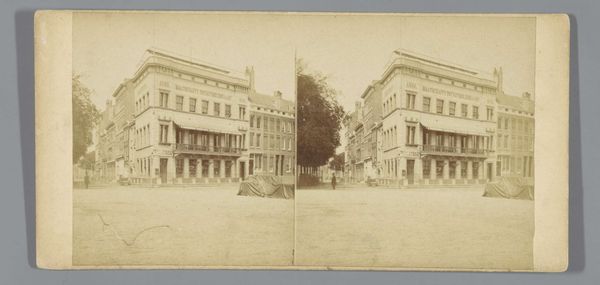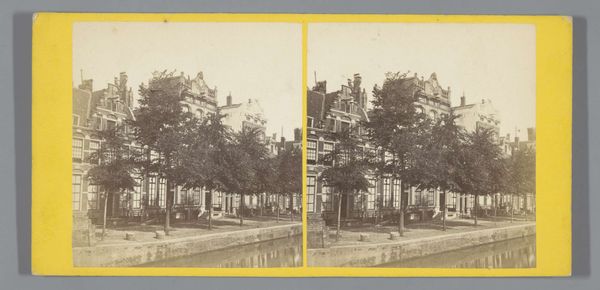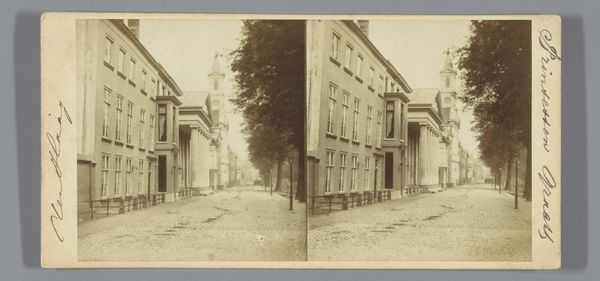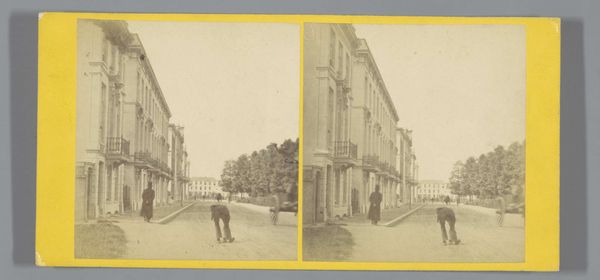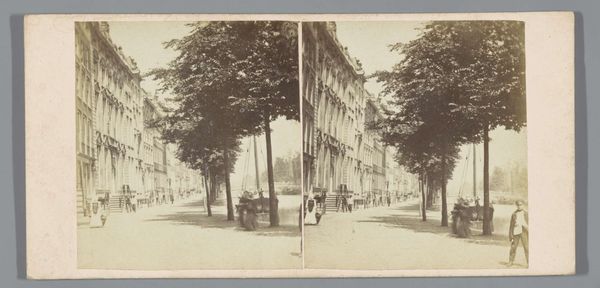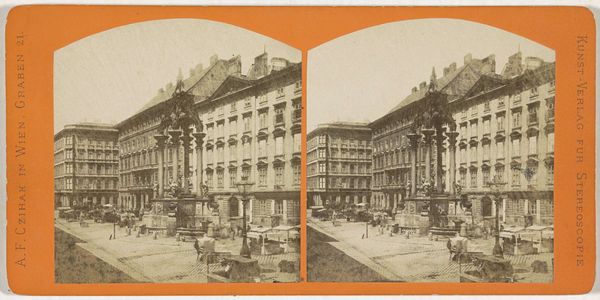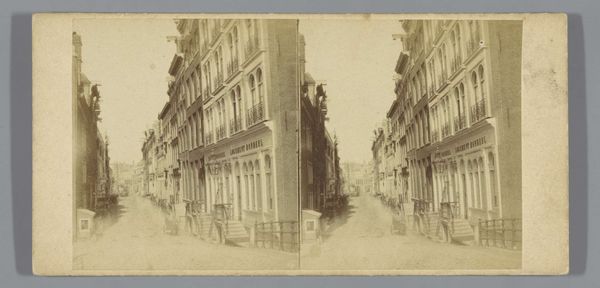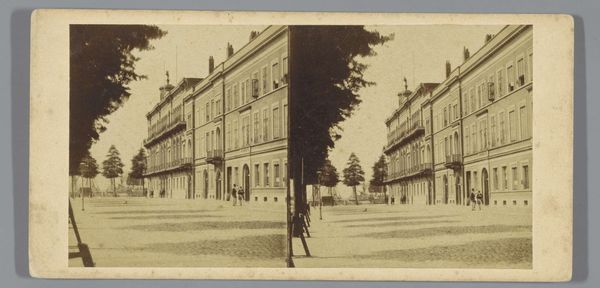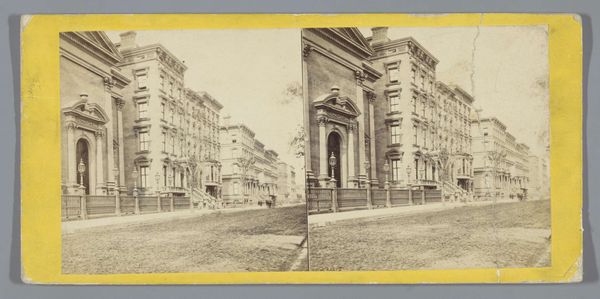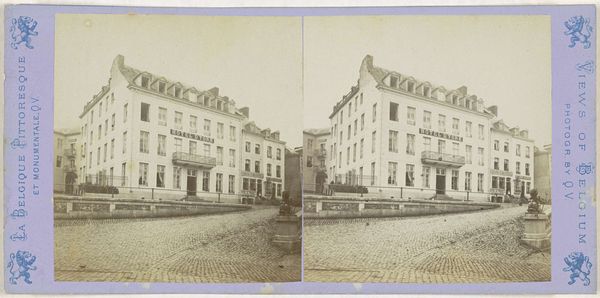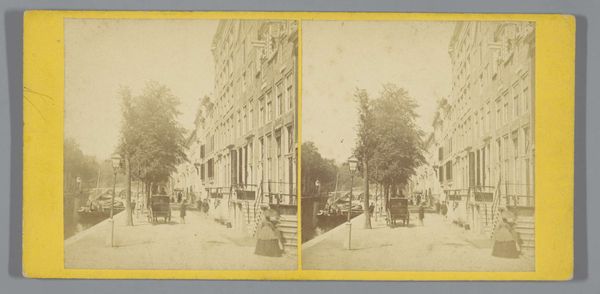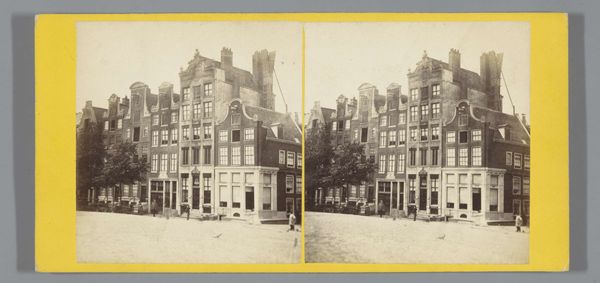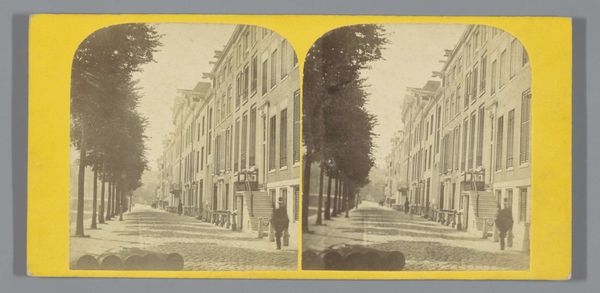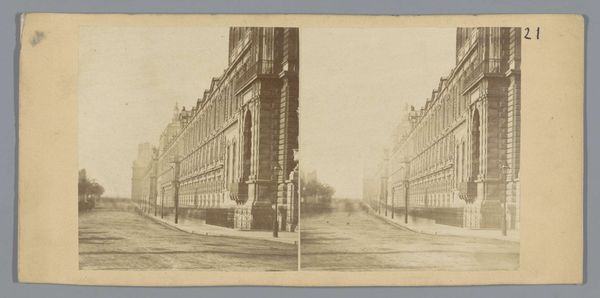
Gezicht op de Keizersgracht bij de Oude Leidsestraat in Amsterdam 1860 - 1885
0:00
0:00
photography, gelatin-silver-print
#
dutch-golden-age
#
photography
#
coloured pencil
#
gelatin-silver-print
#
cityscape
#
street
#
realism
Dimensions: height 83 mm, width 170 mm
Copyright: Rijks Museum: Open Domain
Curator: Pieter Oosterhuis’s photograph, "View of the Keizersgracht near the Oude Leidsestraat in Amsterdam", created sometime between 1860 and 1885… it's a gelatin-silver print currently residing here at the Rijksmuseum. What strikes you most when you see it? Editor: Initially, the stillness. It feels profoundly quiet, despite being a cityscape. The sepia tones add a sense of remove, like looking at a memory, or even a stage set where nothing much ever happened, and now never will. It invites me to reflect on absence more than presence. Curator: Precisely. Oosterhuis was working during a period of immense social change in Amsterdam. Photography offered a new way to document the city's evolving face. He wasn't just capturing buildings, but also a specific moment in the urban experience— a moment poised between tradition and modernity. Editor: So, do you think his framing of that tree as central—the somewhat stark absence of foot traffic or streetcars—points towards a specific socio-political idea? Is this more commentary, less documentary? Or am I making assumptions? Curator: The near absence of people certainly directs our gaze differently. What you see may be due less to direct intervention by the artist, and more the result of very long exposure times during the early decades of photography: Moving objects are nearly impossible to capture. The emptiness amplifies the rigid architecture, the quiet resilience of the buildings, each standing shoulder-to-shoulder. Also consider the growth of tourism during that period; images like this romanticized and, in a way, packaged the city for outside consumption. Editor: Packaged—interesting. It still whispers to me, though, about change. All those brick buildings standing stoically as empires shift—or perhaps crumble slowly, over time, unseen except as an accumulation of shadows. Even now. There is some permanence there that still evokes something strong. Curator: Oosterhuis was attuned to capturing not just the structure of Amsterdam, but its enduring soul, too. The photograph embodies a quiet testament to the passage of time, its impact upon place and perception. I hope you have enjoyed our time contemplating it. Editor: Absolutely. Thanks for illuminating some beautiful corners and offering insights, that really changed how I look at it, even now!
Comments
No comments
Be the first to comment and join the conversation on the ultimate creative platform.
